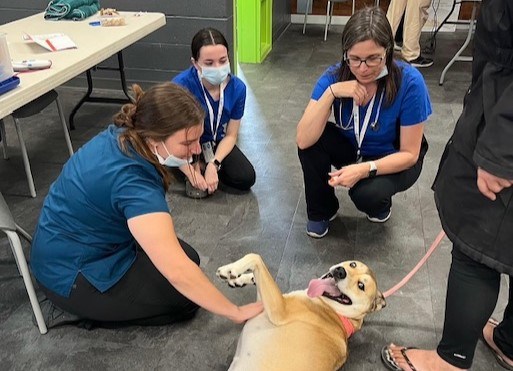Everyone with a pet knows that they’re more than just companions — they’re true members of the family.
And for people facing homelessness or going through turbulent times, they can be the only thing that brings a sense of comfort and stability to daily life.
That’s why caring for pet heath is so important — and why charities like Community Veterinary Outreach, which has a chapter in York Region, are essential to ensure all pets receive the care they need.
“I want to bridge the bonds between the different stakeholders that are a part of health,” said Angela Smith, Community Veterinary Outreach director for York Region. “There’s a lot of breakdowns between human health and animal health. It’s really important they work together.”
Founded in 2015, Community Veterinary Outreach of York Region (CVOYR) provides free veterinary care, including exams, vaccinations, microchipping, deworming, and preventive parasite control for animals of people who are homeless or going through transitional housing who don’t have an existing vet relationship. Though cats and dogs are the most common pets the charity serves, they also accommodate ‘pocket’ pets like hamsters and mice and other common pets like rabbits.
CVOYR also extends their care beyond animals with their ‘One Health’ approach, which also supports the individual through partnerships with organizations like Inn From the Cold, Loft Community Outreach Services, Canadian Mental Health Association, and the Salvation Army. While pets receive vet care, their owners are able to access services like mental and sexual health services, smoking cessation, healthy living programs, and naloxone training and kits.
CVOYR hosts three clinics a year, serving approximately 25 clients and 30 pets per clinic.
“We know that veterinarians are actually considered a gateway for people to access more health care for themselves because they’re not usually wanting to go to a doctor. A lot of the time, they feel disrespected and not welcome,” said Smith. “However, when they come with their animal, we welcome them with open arms.”
Smith began providing veterinary services through CVOYR in 2017, following in the footsteps of classmate Michelle Lem, who founded Community Veterinary Outreach in 2003. Alongside eight core members and many volunteers — ranging from veterinarians to technicians to a photographer that gifts pet photographs to clients — she’s played an important role in filling a gap for pet care for the vulnerably housed in the area.
“I couldn’t do it without the volunteers,” said Smith. “They’re so amazing. It’s just incredible how much they’re there for us. It’s a blessing.”
Currently, the group is working to expand their services to include spays and neuters. They’re also hoping to increase clinic frequency to four times a year.
Those who qualify for CVOYR’s eligibility criteria can contact their caseworker to access services.
“The care, smiles, comraderie, and relationships we build with these people is just amazing,” said Smith.



